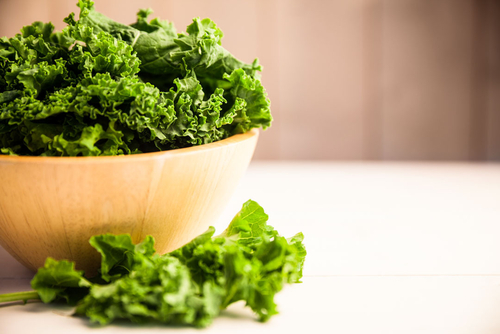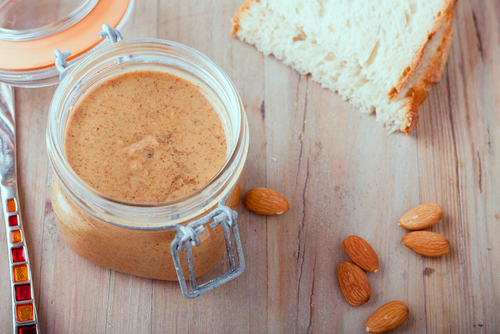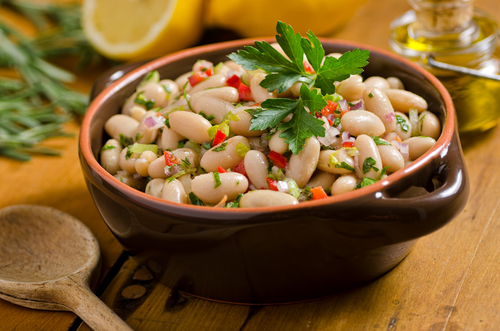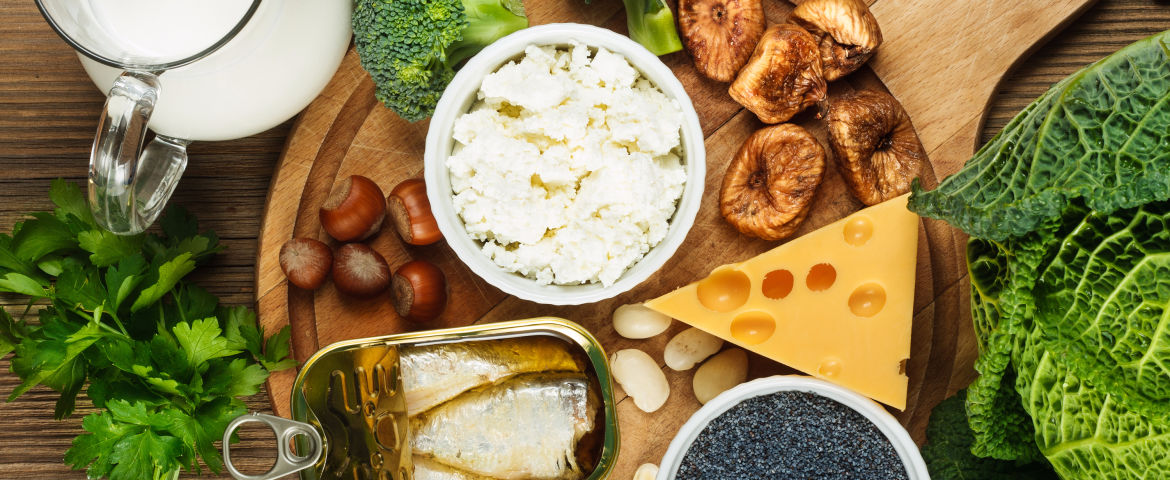By: Catherine Cooley, CHWC
Healthy bones will help you avoid the potential risk of osteoporosis later in life. Bone strengthening starts during childhood and adolescence. However, the right diet can play a significant role in maintaining higher bone mass and strength as you age, helping you prevent the onset of osteoporosis.
Calcium is important for overall health. It affects muscles, hormones, nerve function and even your body’s ability to form blood clots. This essential mineral is also needed for the health of our bones and teeth. However, our bodies don’t naturally make calcium; therefore we must obtain it from the foods we eat. When we don’t get enough calcium in our diet, the body takes calcium from the bones which can lead to weakened bones, fractures and osteoporosis.
Before we dive into the best foods to fortify our bones, let’s explore how much calcium and vitamin D we need to keep our bones strong.
How much calcium do I need?
The most recent recommendation from The Institute of Medicine is 1,000 milligrams (mg) of calcium per day for most adults. To figure out how much calcium you’re getting from your food simply get into the habit of checking nutrition labels of the foods you eat. If the label says 20 percent calcium, simply add a zero to the percentage to calculate how much calcium that food has per serving. For example: 20 percent of daily value (DV) equals 200 milligrams.
More is not better when it comes to calcium. In fact, too much of this nutrient may be harmful. Research from the Women’s Health Initiative revealed downsides to high levels of calcium supplementation include increased risk of kidney stones and heart attack. Overall, it is best to obtain the right amount of calcium from eating a healthy, well-balanced diet.
What about Vitamin D?
Vitamin D is the key that allows our bodies to absorb the calcium from our food. So getting enough of this sunshine vitamin is essential for maintenance of strong, healthy bones. Because there are only small amounts of Vitamin D found naturally in food, there are two ways to make sure you get enough:
- Sunlight. In the summer months, experts say simply being outside for 10 minutes in mid-day sun may be enough to produce 10,000 international units (IUs) of the vitamin, depending on your skin tone. In the winter months, especially here in Michigan, it is near impossible to produce enough Vitamin D from the sun, so supplementation is recommended.

- Supplementation. When Vitamin D from sunlight is in short supply, supplementation may be necessary to get all the Vitamin D our body needs. Recommendations on daily needs from the Vitamin D Council and Institute of Medicine vary from 600 IUs to 2,000 IUs. As a rule of thumb, if you are considering taking more than the lowest level of 600 IUs, be sure to check with your doctor first.
5 Superfoods to Boost Bone Health
Most people tend to think of dairy when they are seeking foods high in calcium, but it’s also found in many vegetables and other superfoods. Not only are these foods a rich source of calcium, many are also packed with other lesser-known micronutrients, such as magnesium and potassium, which are also essential for bone health.
- Dark leafy greens – Such as kale, arugula, collard greens and bok choy. A cup of cooked kale provides 172 mg (17 percent DV) of calcium. Try sneaking in these bone strengthening leafy greens into smoothies, stir-fries and soups.

- Figs – Figs top the list for bone-strengthening fruits. A half cup of dried figs has 120 mg (12 percent DV) of calcium, as well as other essential nutrients such as fiber, potassium and magnesium.
- Almond butter – Simply made from ground up almonds, two tablespoons has 112 mg (11 percent DV) of calcium plus protein and heart-healthy monounsaturated fat.

- Canned salmon – Packed with omega-3’s and calcium, just a half can contains 232 mg (23 percent DV) of calcium. Interestingly, it’s actually the bones in the salmon that hold all the calcium, which are mashed up with the meat so they are unnoticeable.
- White beans – Also commonly called navy or kidney beans, these legumes are a great source of fiber, calcium and iron. Containing 191 mg (19 percent DV) in one cup, try making your own hummus with white beans or adding them to a salad.

For more, be sure to check out an extensive list of common foods high in calcium.
An extra boost
Keep in mind that our bodies can only absorb up to 500 mg of calcium at once, so it is best to spread out our calcium-rich foods throughout the day for the biggest impact. Starting your day off right with a breakfast rich in calcium may be the best time of the day to give your bone health a lift. Many common breakfast foods and beverages already come fortified with calcium. Make it a habit to check labels, compare and choose the item with the best overall nutrient profile when purchasing packaged foods.
For a healthy, well-balanced diet, it is best to incorporate a variety of nutrient-dense foods. Try branching out and experimenting with different calcium-rich foods to add diversity. A diet rich in whole, unprocessed foods will provide the most nutrients essential for the health of the skeletal system.
About the Author: Catherine Cooley, CHWC, is a Health Coach in the Wellness Department at Priority Health. She is passionate about supporting Priority Health members improve their health through lifestyle change and achieving their personal best. Catherine is a lifestyle coach through the National Kidney Foundation’s Diabetes Prevention Program and has a background in weight management and corporate wellness programming.


